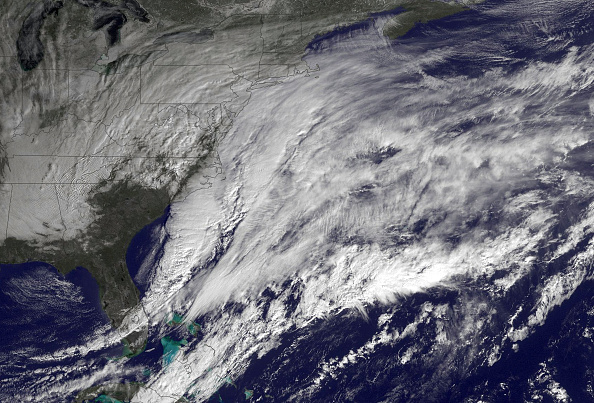
While the northeast struggles to complete final preparations for the oncoming #BlizzardOf2015, everyone else in the United States is appreciating warmer weather, the feeling in their fingers and toes, and the unencumbered ability to venture outside without fear of suddenly freezing to death. That’s mainly because they don’t have to worry about fighting horrified crowds at grocery stores while scavenging for last-minute supplies:
The only provisions I'm buying for the storm are pop tarts and a condom. #BringitOn #blizzardof2015
— billy eichner (@billyeichner) January 26, 2015
Californians, Floridians, and a bunch of other warm weather-bound a-holes can sit back, nurse a cold drink, and update their Instagram feed while occupying beachfront property. They don’t have to worry about surviving Winter Storm Juno.
But wait a second, what the hell is “Juno”? Most professionals keep referring to it as either a blizzard, a nor’easter, or a host of other meteorological (or just completely made up) terms. So why are there enough people using “Juno” to garner the #Juno2015 hashtag trending status?
A quick Google search for “Winter Storm Juno” provides the first clue:
Every major hit comes from the website for The Weather Channel. Aside from Twitter trends and hastags, others are slowly catching on — very slowly. That’s because, aside from the powers that be at TWC’s corporate headquarters in Atlanta, nobody else in professional meteorology names winter storms:
The effort is a first for TWC, and the move was not made in coordination with the National Weather Service (NWS), which is charged with protecting lives and property from severe weather and other natural hazards, or the World Meteorological Organization, which controls the naming convention for hurricanes. The announcement was met with social media backlash as a number of meteorologists and the public took to Twitter and Facebook, among other outlets, to question the move. (Via Climate Central)
A lot of animosity towards TWC exists as a result of their 2012 announcement that they’d be naming storms. This was on fully display in 2013 when then-New York Mayor Bloomberg’s official Twitter account joked “We’re ready for Nemo”:
Many reporters and weather experts rolled their eyes at the name, just as they did when the channel’s storm-naming plan was announced in October. The common criticism is that it is a marketing ploy. The National Weather Service seems to agree; it has advised its forecasters not to follow the channel’s lead, and a spokesman said it had never named winter storms and had no plans to do so. (The New York Times advises reporters not to use the names in storm coverage.) (Via NYT)
Not only was there no preexisting agreement between the various weather organizations to (or not to) name winter storms, but TWC’s opponents viewed it as an advertising gimmick. Naming these storms things like “Nemo” and “Juno” wasn’t a means for improving records or providing better forecasts. Instead, it was a commercial re-branding.
Here’s the thing — it worked. Just about everyone remembers the major 2013 February nor’easter as “Nemo.” They couldn’t necessarily tell you what the exact dates or temperatures were, or whether it was a nor’easter, a blizzard, or both. But the name? They remember the name:
[As] Bryan Norcross, the channel meteorologist behind the idea, put it to the Times, “The fact is that Twitter needs a hashtag.”
Twitter would seem to agree. As I write this, #nemo is a national trending topic on the network. A general search for the topic turned up nearly 200 posts in ten minutes, just before noon on Friday. As I watch new Tweets come in, “Nemo” seems to be edging out the more generic “blizzard.” (Via TIME)
Sure enough, #Juno2015 and #Juno are trending just as much as (if not more than) #BlizzardOf2015, and the only reason the first two even exist is because of TWC’s winter storm re-branding efforts. Even if other professional meteorology and news organizations don’t like it, the policy is here to stay.
Then again, other social media-centric linguistic coinages like “snowpocalypse” and “snowmageddeon” are popular on Twitter and Instagram feeds (and a lot less scientifically-based than TWC’s naming system). So whatever this damn storm is called, it’s coming and this is how everyone in the northeast feels:
